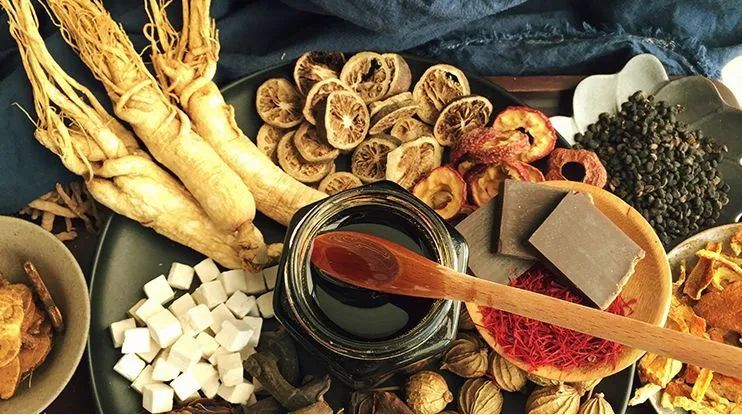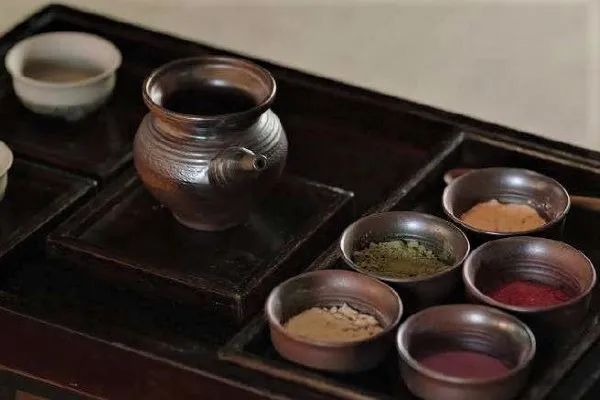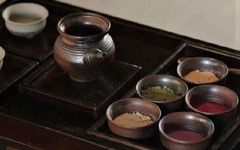Forms of Herbal Formulas

Herbal formulas come in various forms, each with different properties and effects. Common forms include pills (wan), powders (san), pastes (gao), dan (dan), tinctures (jiu), and decoctions (tang).
1. Pills (Wan):
Pills, commonly referred to as wan or medicinal pills.
These are round forms made by grinding herbs into fine powder and then binding them with cold boiled water, honey, or sticky substances like rice or flour paste.Depending on therapeutic requirements, the size and weight of pills can vary, ranging from as small as mustard seeds to as large as bullets, or the size of green beans or phoenix seeds.
Typically, large pills weigh about 1 to 3 qian (3.3 to 10 grams), while small pills can number between 200 to 400 per liang (37.5 grams), and very small pills can range from 5000 to 10000 per liang.
Pills are absorbed more slowly in the stomach, making them suitable for chronic diseases requiring long-term consumption. This is why it is said that “pills are slow” (wan zhe, huan ye). Additionally, pills are often used for conditions in the lower jiao (lower abdomen) due to their slow absorption, allowing them to take effect in the intestines; however, they can also be used in acute or severe cases for convenience.

2. Powders (San):
Also known as powdered medicine, this involves grinding herbs into fine powder.
There are procedures for separate grinding, combined grinding, and sequential grinding. Generally, combined grinding is most common, but sticky herbs like frankincense, myrrh, dragon’s blood, and child tea, or highly volatile herbs like musk, borneol, and camphor, or precious herbs like rhinoceros horn, antelope horn, pearl, bear bile, and toad venom, are ground separately.

Sequential grinding is used when a prescription contains a small amount of precious herbs or other herbs that must be ground separately. The method involves grinding the required herbs separately, placing one in a mortar, then adding an equal amount of other powdered herbs, grinding until uniform, and continuing to add equal amounts of other powders until fully mixed.
Powders are used for internal consumption and act faster than pills; they can also be used nasally or for external application.
3. Pastes (Gao):
Pastes are made by decocting herbs in water to concentrate into a thick semi-solid form, which is then taken with hot water.
General preparation involves soaking the herbs in water overnight, decocting two to four times, filtering the juice, and then boiling it down until it no longer seeps through paper. Additionally, those made with plant oils are used as external plasters.

Pastes are often used for tonifying purposes, suitable for chronic weakness, and those taken in winter also belong to this category.
4. Dan (Dan):
Dan is made through sublimation or fusion methods, primarily from mineral-based medicines.
There are also mixtures of general herbs, reflecting the meaning of “true heart without deceit is called dan”.Dan can come in various forms, including pills, powders, and tablets.
Its usage is similar to that of pills and powders.
5. Tinctures (Jiu):
Tinctures are extracts obtained by soaking herbs in white liquor, commonly referred to as medicinal wine.
Preparation methods include cold soaking and hot soaking. Cold soaking involves soaking the herbs in liquor for a period before consumption; hot soaking involves sealing the herbs and liquor in a jar and gently heating them in a water bath for three to seven days, then cooling.
Medicinal wines are often used for rheumatic pain, leveraging the power of alcohol to help circulate qi and blood, enhancing the efficacy of relaxing muscles and joints.

6. Decoctions (Tang):
Decoctions are made by boiling herbs in water to extract their juices, pouring out the liquid and adding more water for a second boil, with the first being the primary decoction and the second the secondary decoction.
Generally, each dose is decocted twice, with methods for taking the first and second decoctions separately, or combining them for two doses.In clinical practice, decoctions are the most widely used, as they are absorbed quickly, act strongly, and are convenient for adjusting according to symptoms.


Pills, powders, pastes, dan, and tinctures are mostly classified as prepared medicines, and can be combined according to the needs of the condition. Some pills, powders, pastes, and dan can also be used within decoctions or taken with the decoction liquid.




